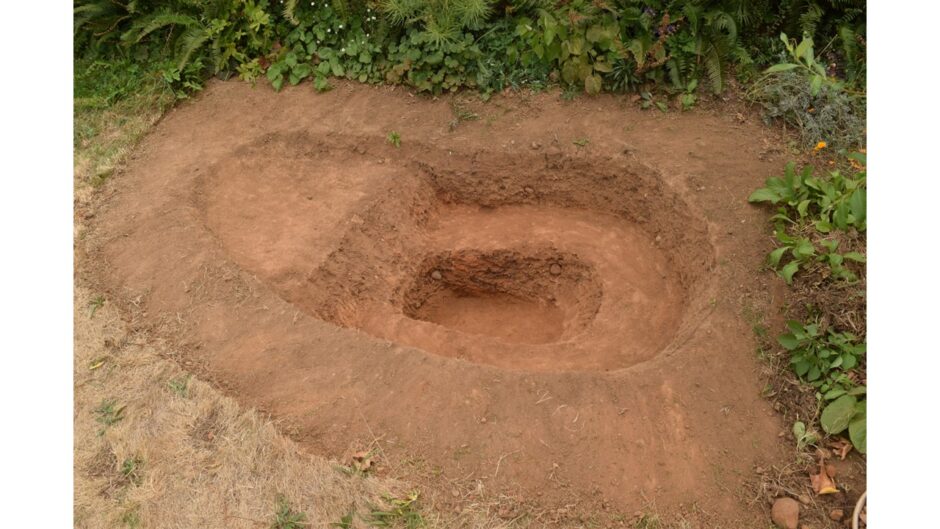
In late August of 2021, I put in a different kind of garden—a water garden. I dug a hole in my backyard. It was six feet long, four-and-a-half feet wide, and two feet deep at the deepest point.
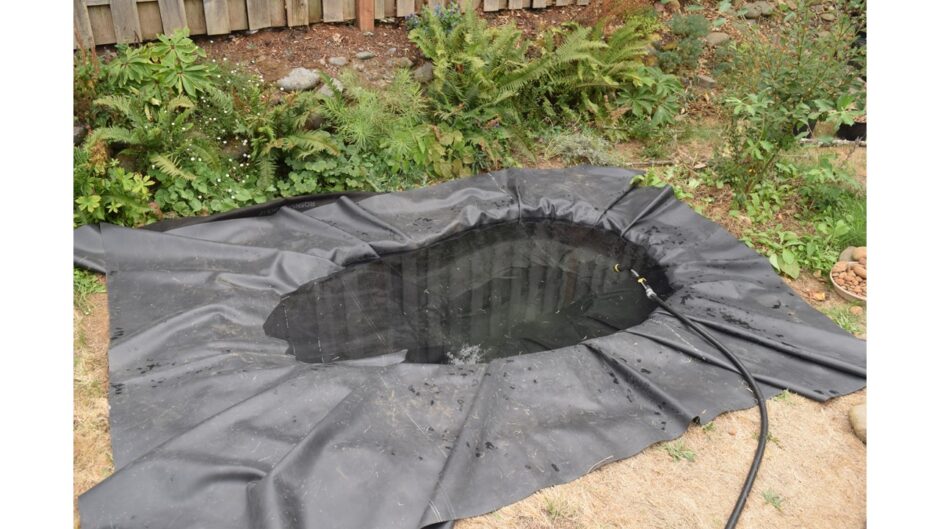
I put in a pond liner, and I filled it with water.
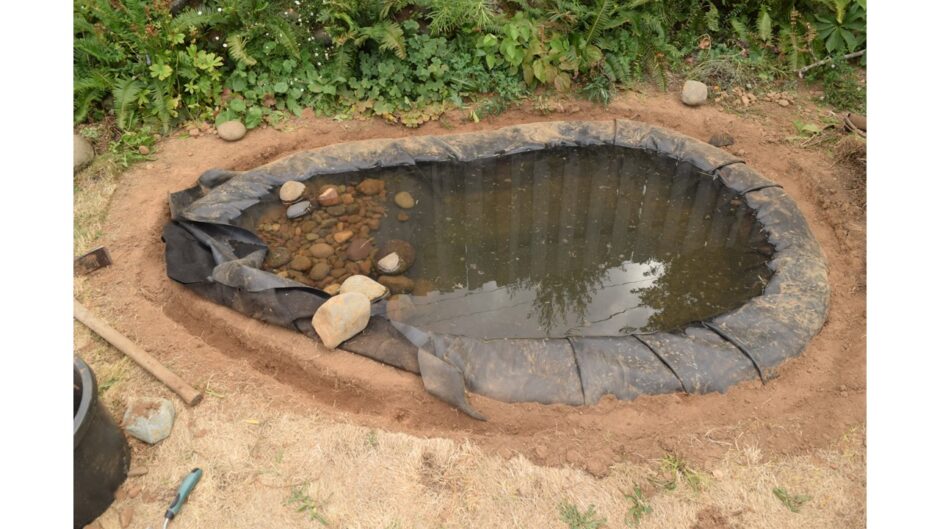
I trimmed off the excess liner, and I buried the edges and tamped them down.
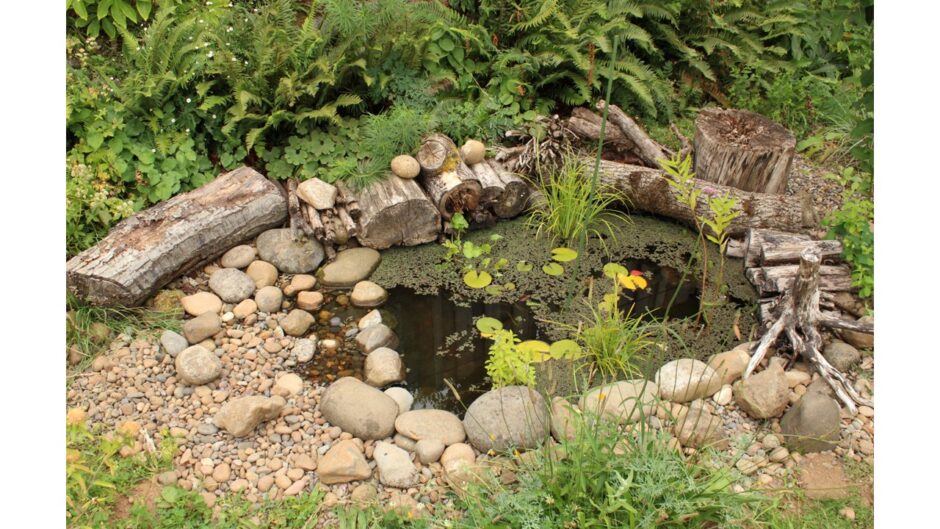
Then I covered up the edges with rocks and logs, and I put in some water plants. I put in a small water lily (Nymphaea ‘Sioux’), one swamp milkweed (Asclepias incarnata), one marsh marigold (Caltha palustris), one wapato (Sagittaria latifolia), two gray rushes (Juncus patens), two slough sedges (Carex obnupta), and a handful of western milfoil (Myriophyllum hippuroides), an underwater oxygenator.
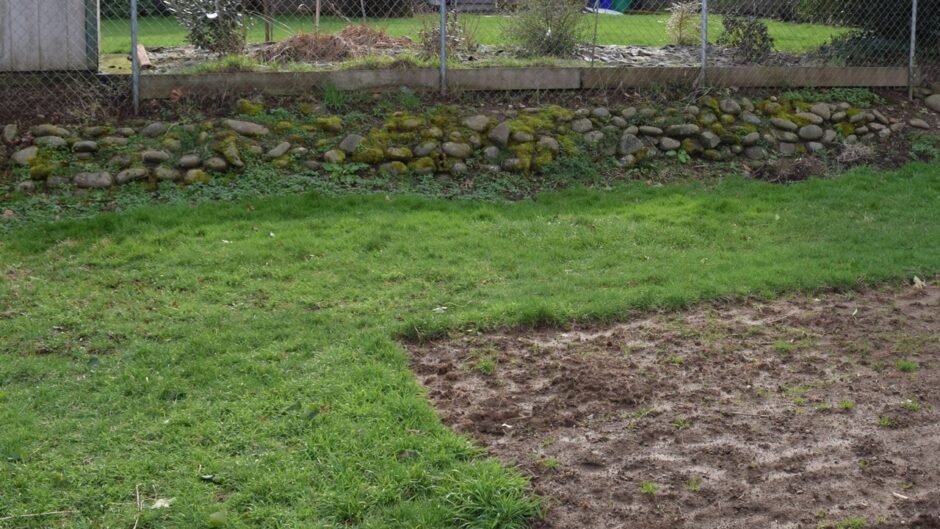
Here’s what the area looked like several years ago, when we first moved in.

And here’s what it looked like this past year. This has become my favorite part of the garden.
I didn’t put any fish in my pond, because I was hopeful that this would become a dragonfly pond, and fish eat baby dragonflies.
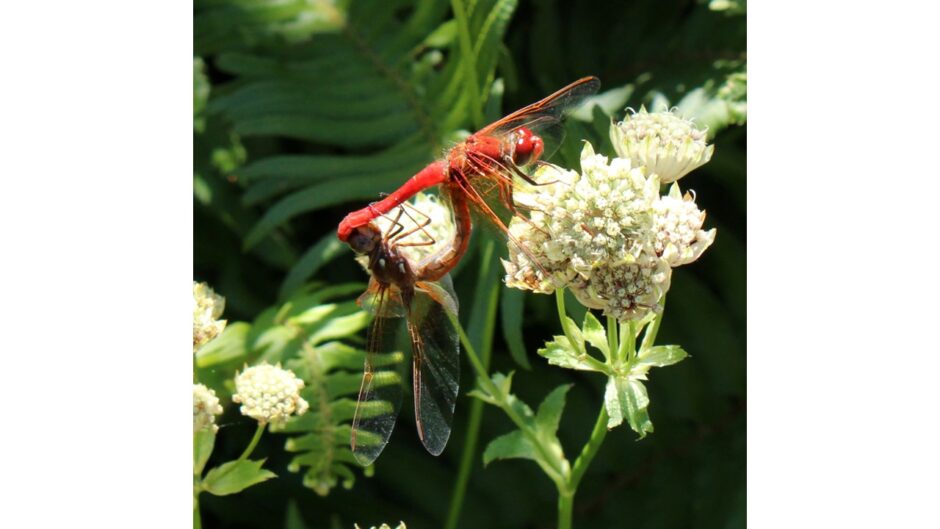
I was not disappointed. In July of the following year, I saw two cardinal meadowhawk dragonflies mating by the pond. I don’t know if you’ve ever caught dragonflies in the act, but when they mate, they do it in this strange position. It’s called a mating wheel.
The male is the bright red one, and the female is more of a rusty-orange color. You’ll notice the male is grabbing the female by the head. He has pincers on the tip of his abdomen, which he uses to hang onto his lady friend.
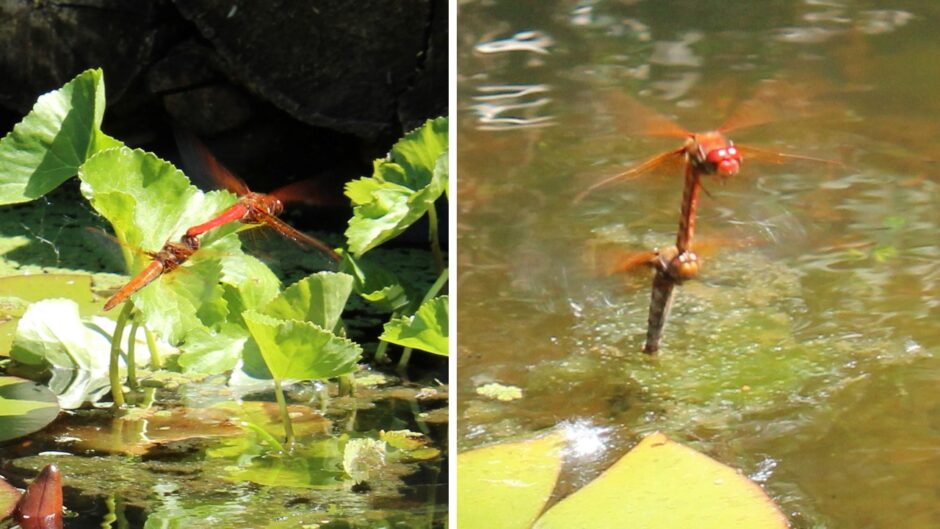
When his partner is ready to lay her eggs, the male doesn’t let go, because he doesn’t want any other males to mate with her. He drags her around by the head, dipping her tail end into the water over and over again, so she can deposit her eggs—their eggs.
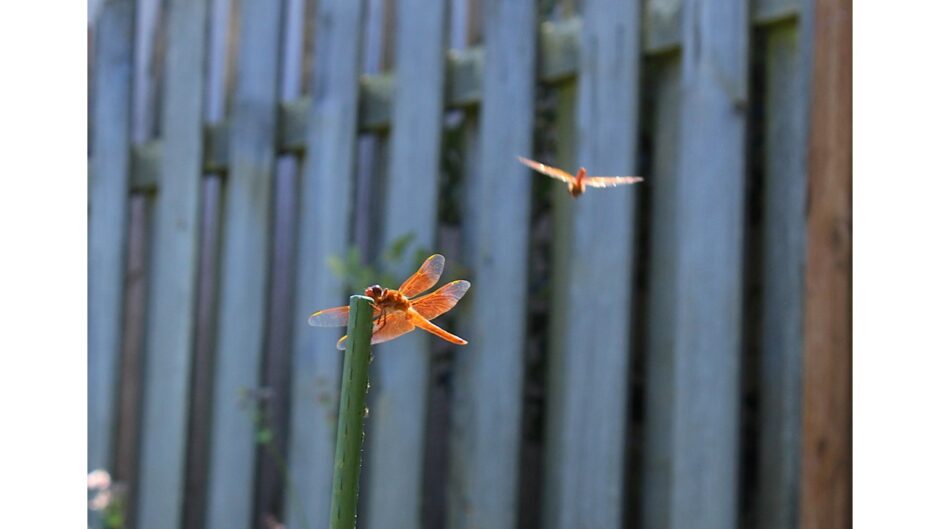
Later that day, I saw the couple at the pond again, flirting with each other. They were flying around the perching stick that I had put in the pond specifically for the territorial dragonflies.
Only upon closer inspection, I realized this wasn’t the cardinal meadowhawk couple after all, but a new couple—a pair of flame skimmers. Flame skimmers are larger than cardinal meadowhawks, and the males aren’t red—they’re orange. I was excited to have two species mate and lay eggs in the pond on the same day. But they never got down to business.
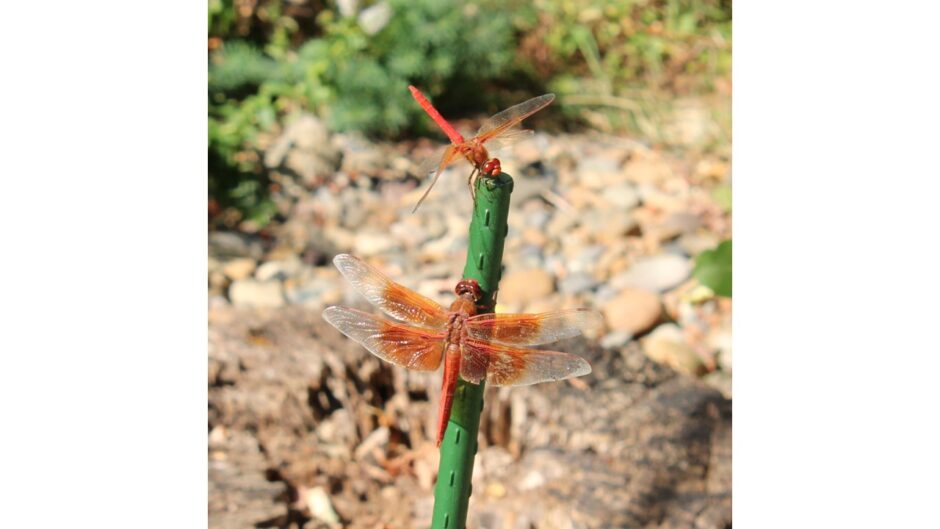
Then it dawned on me. This wasn’t a male and a female. These were two males, fighting for possession of the perching stick. The cardinal meadowhawk baby daddy at the top of the stick was trying to drive off a male flame skimmer who had invaded his territory.
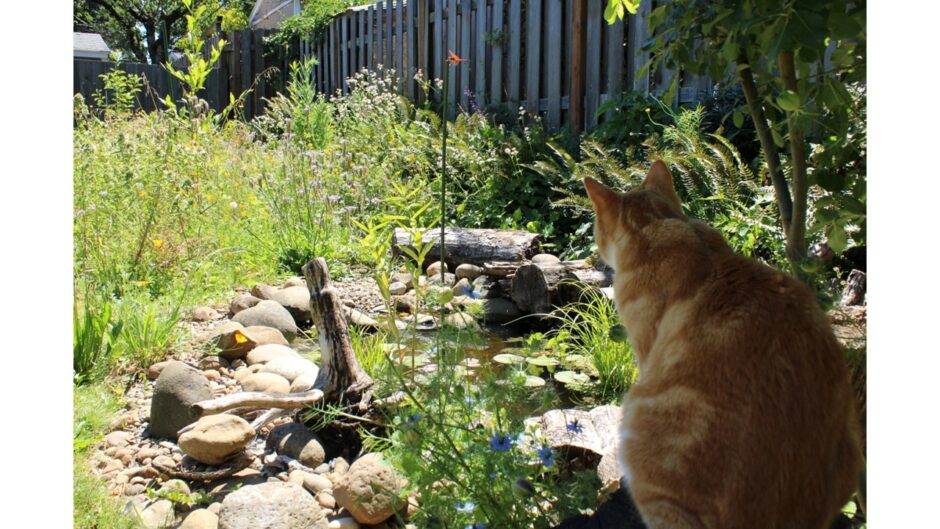
It was a fierce battle. Leonard and I looked on from the shadow of the willow tree.
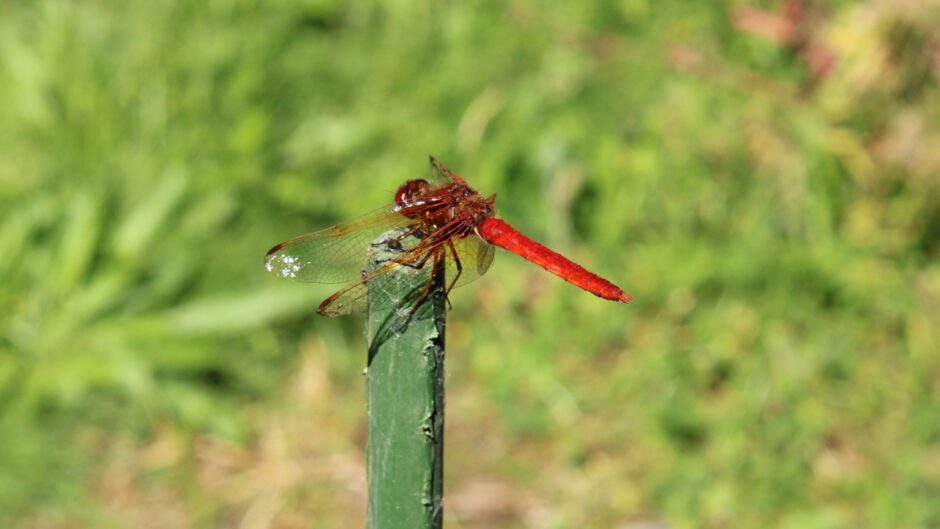
In the end, the plucky little meadowhawk won. He got his stick back. I’d always thought that male insects were deadbeat dads, but here was one who proved me wrong. He stood guard over his babies long after the mother had left. In fact, for almost three more weeks, he came back every day and sat on that perching stick for hours.
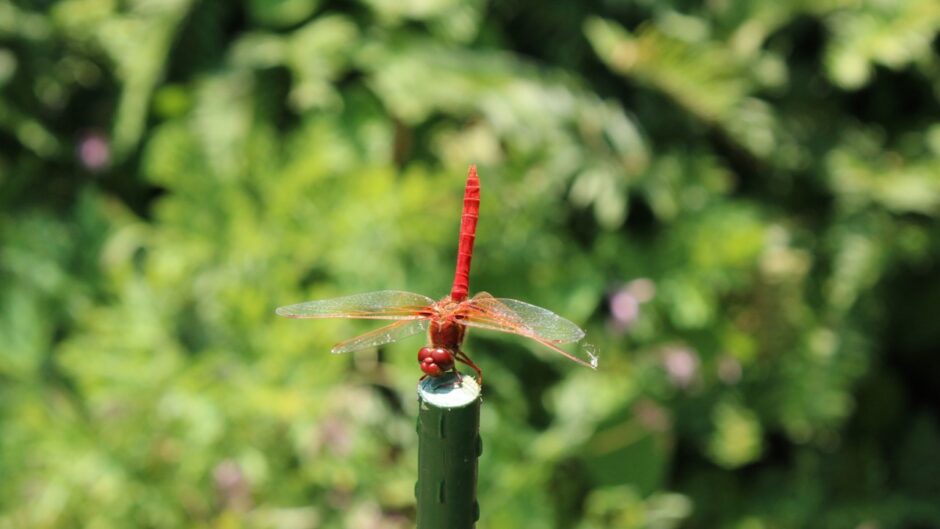
On very hot days, he would sit like this, with his tail end high in the air. This is called obelisking, and dragonflies do it to stay cool by reducing their surface area that is exposed to the sun.
Three weeks after the eggs were laid, I was scooping some water out of the pond to see what was in there,
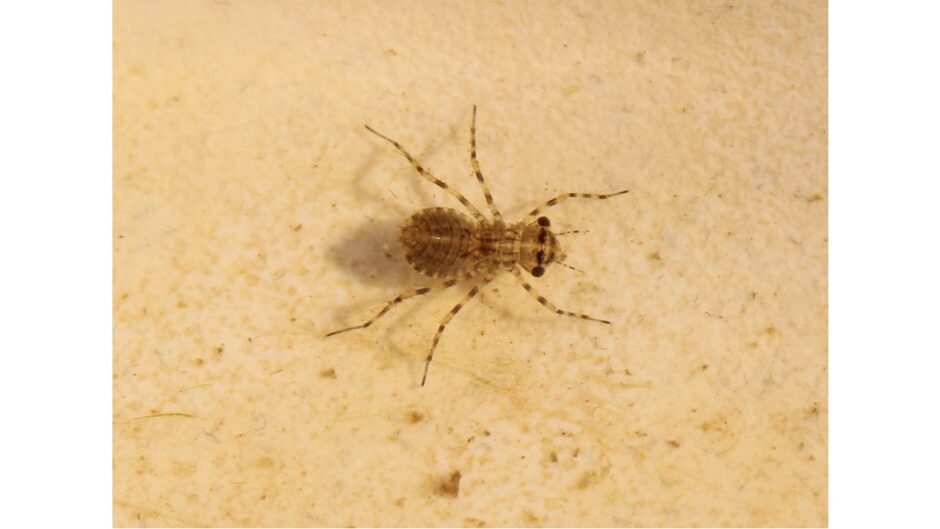
and I found some of these. This is a baby dragonfly, a dragonfly nymph. Nymphs live off of small creatures in the pond, especially mosquito larvae. Every time I show my pond to someone new, they say “But doesn’t it attract mosquitoes?”, and I say, “Yes! Thankfully, it does.” Mosquitoes are prime food for dragonflies—both the nymphs and the adults.
The nymphs hung out in my pond, eating mosquitoes all summer, fall, winter, and well into spring,

and then on May 20, I began to find these on my pond plants. This is the shed exoskeleton of a dragonfly nymph. When a dragonfly is ready to emerge, the nymph crawls out of the water and splits its skin, and the adult dragonfly crawls out, leaving behind this shell, called an exuvia. The white threads are the breathing tubes of its old respiratory system.
I wondered if I would get to see a dragonfly actually emerging from the pond,

and then a couple days later, I did. It was freaky as hell. First, its head popped out, and then it wriggled most of its body free. It did a backbend and stayed in that position for a while. Eventually, it freed the rest of its body and hunkered down on top of its shed skin. It was small, soft, pale, and wrinkled at that point, but it began to pump hemolymph—the insect equivalent of blood—throughout its body to inflate itself up to size.

Here it is a little farther along. It’s starting to look a lot more like a dragonfly now. The whole process takes a few hours.
So that was in late May,
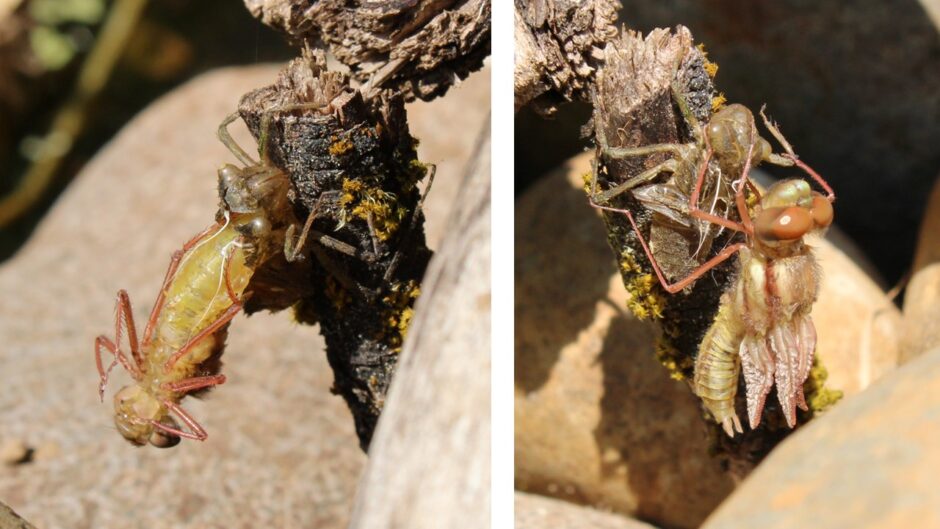
but all through June and into July, I had dozens of these cardinal meadowhawks emerging from my pond, and it was wild. Remember the Chestburster scene from Alien? You get the gist.
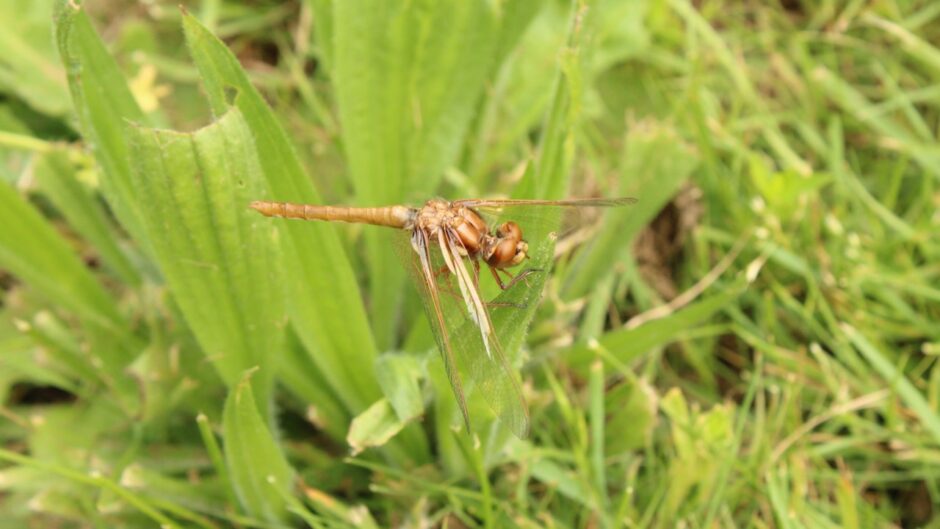
Here’s the last stage before the dragonfly achieves its final form. Its wings are fully expanded, but it’s not a strong flier yet, and it hasn’t developed its bright colors. At this stage, it’s called a teneral. Tenerals are vulnerable to birds and other predators, but they will soon get up to speed and be zipping around the garden.
By September of 2022, the adult meadowhawks had disappeared, and I figured dragonfly season was over. That’s when a new character appeared on the scene:

a shadow darner. A large dragonfly, she roared in like a helicopter and proceeded to lay eggs on the logs overhanging my pond. She returned regularly to do more of the same, and it was a delight to see her each time.
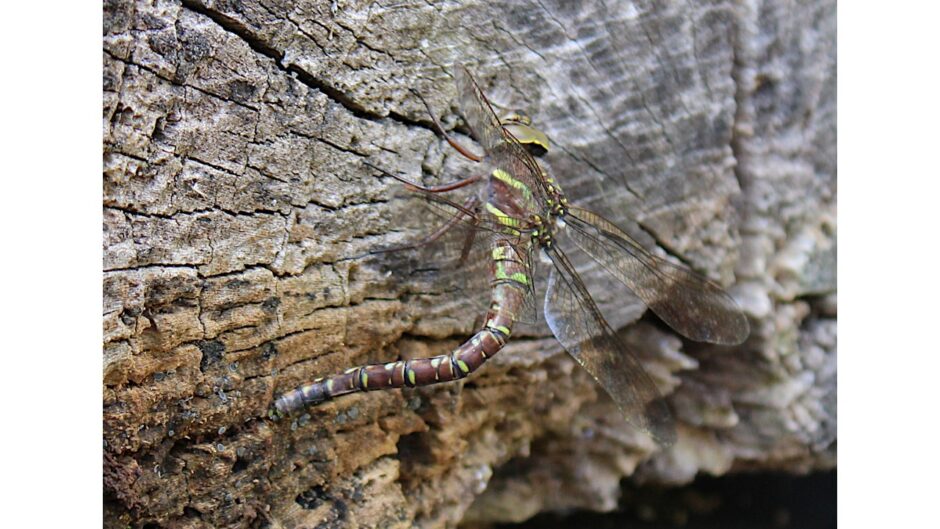
I thought it was weird how she laid most of her eggs outside the pond, and I wondered if any of her babies would actually hatch,
but the following summer,
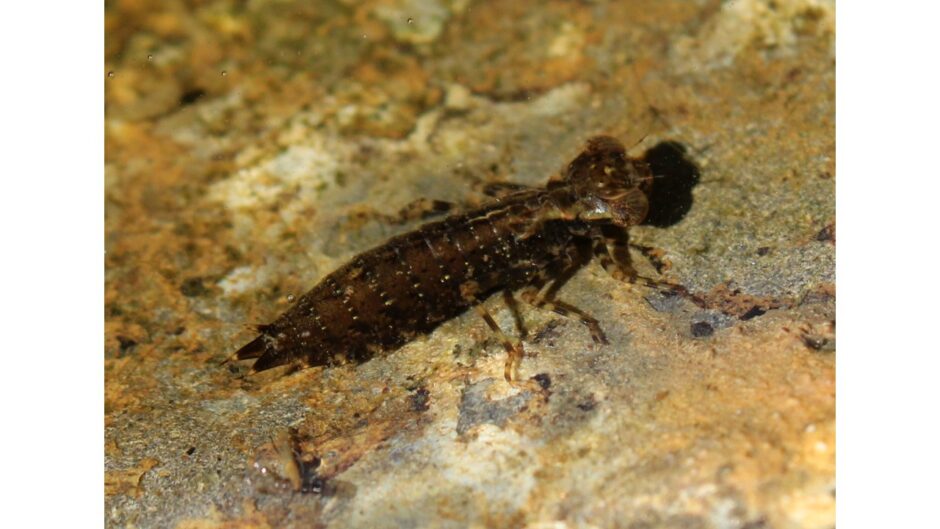
I did find some of her nymphs in the pond. They were longer and thinner than the baby meadowhawks.
I didn’t get to see any adult shadow darners emerge, because they do it at night. But a few did come out in August,
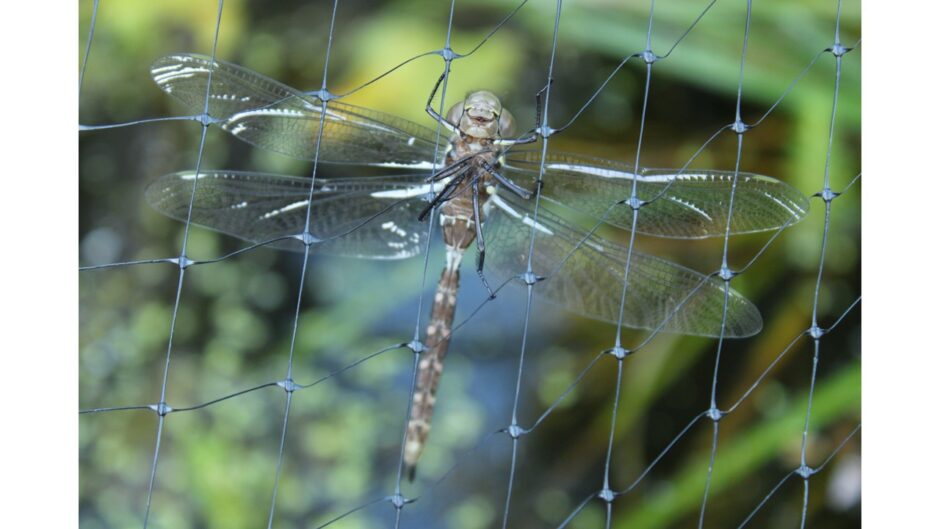
and they were waiting for me to free them in the morning. After battling the raccoons many times, I learned that I have to net my pond every night if I don’t want it trashed. It’s a hassle, but I think it’s worth it if I can protect these spectacular creatures.
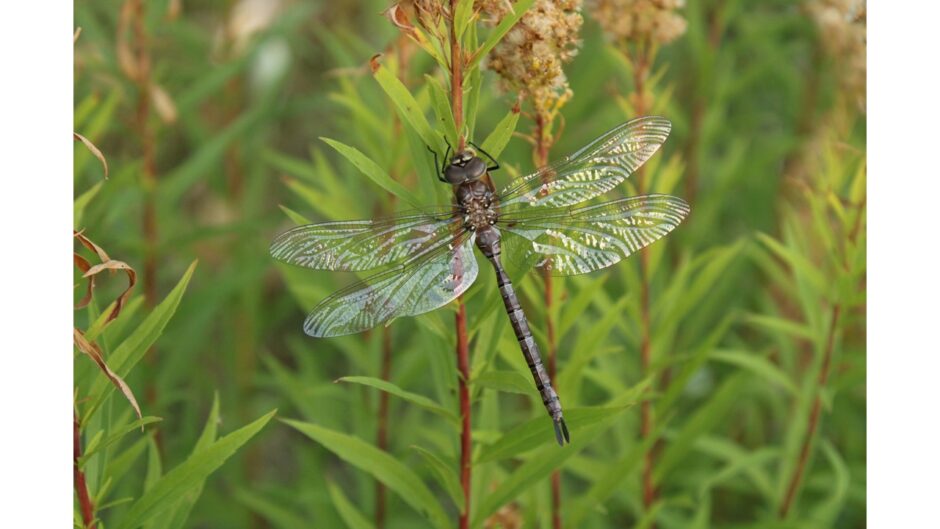
Newly freed, this shadow darner teneral hung out for a spell while it got its bearings. Then it flew away.
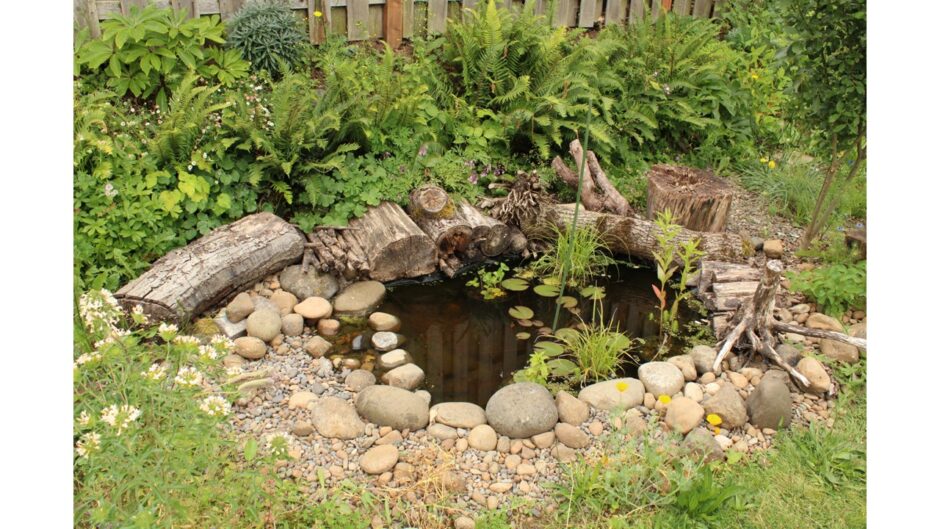
Thus, there you have the story of how a sad, patchy piece of lawn in my backyard became an oasis—a watery wonderland full of life—in the span of less than one year. What was once a barren patch of land has become a valuable resource for dragonflies and an endless source of entertainment for me. The water garden has been one of the best things I’ve ever added to the landscape.
I love my little pond!

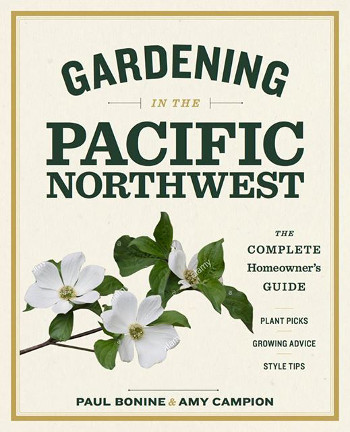























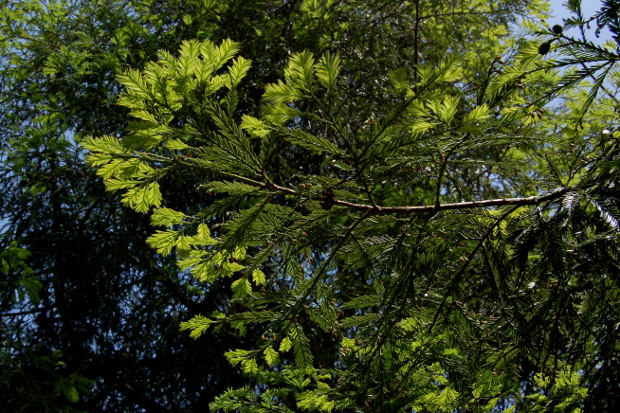


What a great informative post! The photos are amazing!
Thank you, JoDee! You’ll have to come over and see the dragonflies emerging this summer. 🙂
Amy, this is a fabulous post! Excellent attention to detail with the lifecycles, and gorgeous photos! What a treat!
Thank you so much! I’m glad you enjoyed it and took the time to comment.
Fabulous post, Amy! You are such an inspiration. Incredible photos, too.
Thanks, T! You’ll have to come see the homestead this summer and see all the changes I’ve made.
Love it. Of course. Wondering what kind of net you use & how you put in place at night. Cheers, Darling.
Thank you, Tricia! It is just a piece of cheap, thin bird netting from Garden Fever. I have to secure it with rocks all around and it is really a pain. I keep wondering how I could build something that would just fit over the whole thing. Maybe some day…
Thank you for this inspiring and hopeful post!
I’m glad you enjoyed it, and thank you for taking the time to comment! 🙂
Ah, how fantastic! As one who has done multiple battles with the damn raccoons I was jealous your pond had escaped them, sorry to learn that’s not the case. I love that photo of Leonard watching.
Thanks, Loree! Yeah, I wish I had a better system for covering the pond. I guess lots of spiky plants isn’t the answer either!
Wow. I have been wanting to put in a water feature, and this sounds wonderful. You make it sound as if it has not been that hard to set up and get going. Was it really as easy as it seems? What obstacles did you have? What kind of time investment has been involved — both in install and then in upkeep?
Also, I was thinking of adding water mainly in terms of all the birds that visit my yard. Is your pond used by birds? Or is it just the dragonflies? I’d love to have dragonflies, but I’m just wondering if I have to do more that one kind of water thing in the yard to help out both. I’d love to hear your thoughts.
Thank you, Amy — for your great enthusiams for these amazing insects!
Hi Heather,
It is a small pond, so yes, it really was pretty easy to put in. It took maybe a couple of weeks. The only major maintenance is because of the raccoons. Every night I have to cover it, and every morning I uncover it, which doesn’t take long, but it’s still a pain. I have to do a really good job of it, or the raccoons will still get in and tip plants over and tear them up. They knock rocks and gravel into the pond all the time. If I had it to do over, I would probably devise some kind of sturdy but collapsible cover that fit perfectly that I could easily put on and take off. I might also make it deeper and not put ledges in it, to make it less accessible. I would have to put the plants on concrete blocks instead. I also have to top up the water in the summer periodically, but that’s no big deal. Yes, I did include a shallow end for the birds, and they do use it. If you have more questions, please feel free to email me!
Thanks, Amy! This is super helpful. I definitely have raccoons. I was thinking that if I didn’t have fish, they wouldn’t be interested, but that’s not the case, based on your experience. Putting on the cover each night then, huh? I could likely manage that, but what if I’m away for a week or two? Do you just have it covered in that situation. It seems like from a wildlife perspective, that could be problematic. Hmmm. I would love any additional inputs, but we can also talk this through a bit more in the future. Thanks for your response! –Heather
If I go on vacation in the summer, I just have to leave it uncovered and hope for the best. I’m still thinking of some easier way to cover it so it would be simple for a neighbor friend to do while I’m away.